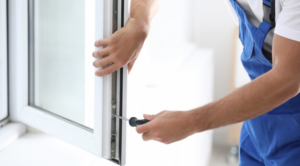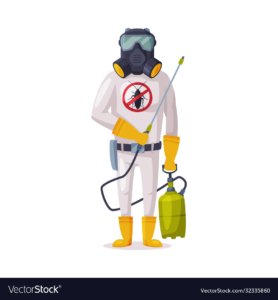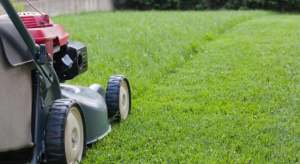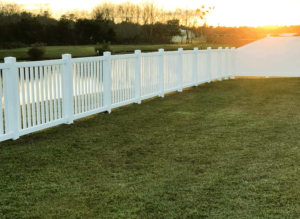If you live in a rural area, chances are your home comes with a septic system. Regular septic tank pumping, maintenance and inspections will keep your home safe and clean. Click the https://www.septictankarmadale.com.au/ to learn more.
The septic tank is a buried, water-tight container that holds wastewater for processing. Solid waste sinks to the bottom forming sludge and grease floats to the top as scum. Effluent or liquid wastewater exits the tank through a piping network into an absorption field (or drain field).

Whether you’re installing a new system, or buying a home with an existing septic tank, it’s best to have the work done by a licensed contractor. A good contractor will be able to advise on how large or small a tank should be, where it should go, and what soil tests might be required. They will also know the best way to install a system so it’s safe, reliable and legally compliant.
The installation process takes between five and seven days. It starts with an inspection to determine the scope of the design and if any soil tests are needed. An engineer will then review the plan to make sure it meets local health and safety standards. The contractor will then excavate the site and start construction.
A septic system is a large underground tank that treats wastewater by percolating it through the soil. This eliminates the need to pump sewage to a central sewerage plant, protecting the environment, and reduces pollution levels in lakes and rivers downstream from residential areas.
When installing a septic tank, it is important to consider the land slope and nearby trees. The tank should be positioned to ensure it doesn’t impact the drainage of water from adjacent properties, nor cause a build up of nutrients that could damage the surrounding soil. The location should also be away from groundwater sources, as sewage and its constituents can leach into waterways if it gets into them.
A faulty septic tank can cause environmental, health and financial problems. It can lead to untreated sewage seeping into soil and groundwater supplies, which exposes people and animals to disease-causing bacteria. It can also contaminate nearby water bodies, such as rivers and lakes, where it enters drinking water supply networks.
When inspecting a septic tank, inspectors look for cracks in the tank body, sludge and scum levels. They also check the distribution box (known as a D-box) for damaged outlets that restrict flow, structural integrity and tilting or tipping that causes uneven distribution of effluent to the drain field lines. The distribution box is the junction between the septic tank and the drain field, so it’s important to maintain it correctly.
Maintenance
A septic tank is a buried, watertight container that holds wastewater from your toilets, showers and drains. Solids in the wastewater sink to the bottom of the tank and form sludge. Liquid waste flows through a T-shaped outlet into a septic system drainfield, a series of perforated pipes and surrounding soil where it undergoes further natural treatment and filtration. The drainfield prevents sewage from seeping onto the ground surface, where it could expose people and pets to disease-causing microorganisms.
A well-designed septic tank can last 30 to 50 years or more, providing safe and effective sewage disposal for your home. However, you must follow certain care and maintenance guidelines to keep the septic tank working properly.
The tank should be regularly pumped out to remove the sludge and scum that accumulate over time. You should also ensure the baffles are in good condition, and replace them if they become damaged or worn. It is important to hire a licensed septic tank professional to pump and inspect the septic system on a regular basis, and to repair any problems that they identify.
To reduce the load on the septic tank, spread your household water usage throughout the day and week to avoid peaks in flow. Install water-conserving devices in faucets and showerheads, and use the washing machine and dishwasher only when full. Limit the number of chemical cleaning products, detergents and bleach used in the house, and take them to your local hazardous waste collection center for proper disposal.
Never enter the septic tank, which can contain toxic gases that can kill a person in a matter of minutes. If you need to work on the septic tank, do so from the outside with a well-ventilated area and someone standing by to help you in case of an emergency.
If you decide to sell your home, or if the septic tank needs replacing, have it inspected by a licensed septic tank professional before you transfer ownership of the property. The inspector will check for proper functioning, ventilation and drainage and will recommend any repairs.
Pumping
When a septic system is installed, a tank is usually included. This tank is connected to a series of pipes that transport wastewater from the home into the soil absorption field. The wastewater is then absorbed by the ground and is reclaimed for use. There are many benefits to having a septic system in your home. For example, it helps to save money on property taxes because the home is not connected to a municipal sewer system. It is also good for the environment because it reduces the amount of waste that is sent to landfills. In addition, septic systems are better for your health because they help to prevent hazardous materials from entering the groundwater supply.
When it comes time to pump the septic tank, a professional will come out to your home with a truck that is equipped with a large tank and giant suction hose. They will first need to locate the septic tank and dig up some of the yard to access it. Once they are able to reach the tank, they will begin to pump out the sewage. This will take a while because the tank is so big.
As they are pumping, the technician will be observing the tank and the rest of the septic system for any issues. They may also be making suggestions for repairs or replacement of parts. It is important to keep in mind that the septic system is the heart of your home’s plumbing and should be treated as such.
After the septic tank is pumped, it will need to be cleaned out. A septic tank cleaning company will clean out the entire septic tank including the float switch and the baffle wall. They will also clean the effluent filter in the outlet pipe. This will ensure that no solids are left behind to clog downstream components of the septic tank and the drain field.
A septic tank should be pumped on a regular basis to prevent it from overflowing and causing major damage to the surrounding area. The frequency of the pumping will depend on how much you are using the septic system and what items are being flushed down the drains.
Replacement
When a septic system malfunctions, the result is typically a clogged or flooding drain field. This exposes you and your family to the disease-causing bacteria found in sewage waste. It may also cause backups in toilets and sinks.
A septic tank-soil absorption system separates solid waste from wastewater, then filters and treats it before leaching clean water back into the ground. This method works best for rural properties with favorable soil conditions.
During the wastewater process, bacteria break down solids in the tank. The resulting wastewater is referred to as septic tank effluent. The septic tank is made of polyethylene, fiberglass, or concrete, with most systems having a lid for inlet and outlet tees. Inlet and outlet tees ensure that sludge and scum layers do not make it to the drain field, as these materials would clog and overload the drainage field.
The drain field is a series of perforated pipes or slotted panels, usually covered by a layer of gravel, tire chips, or other lightweight material. The septic tank effluent flows into the drain field from the inlet tees and then percolates through the soil layers to remove impurities. The septic tank also provides secondary treatment by allowing aerobic (oxygen-using) bacteria to deactivate disease germs that remain in the wastewater.
When a septic tank fails, the waste can flow into the home through a drain line, causing clogs and backups in showers, bathtubs, and toilets. In addition, sewage can leak onto the ground surface and flood basements and crawl spaces.
If you notice a strong, sewage-like odor, contact a septic expert right away. A clog in the tank’s ventilation trap can also create dangerous hydrogen sulfide gases, which are emitted as bacteria break down sewage contaminants.
Besides keeping the drain field clear, there are several other things you can do to keep your septic system working properly. Ensure that downspouts point away from your tank, limit multiple household members to one shower at a time, and wash clothes over a few days rather than back-to-back. In addition, it’s important to keep playgrounds and other storage buildings away from the septic tank and drain field.








